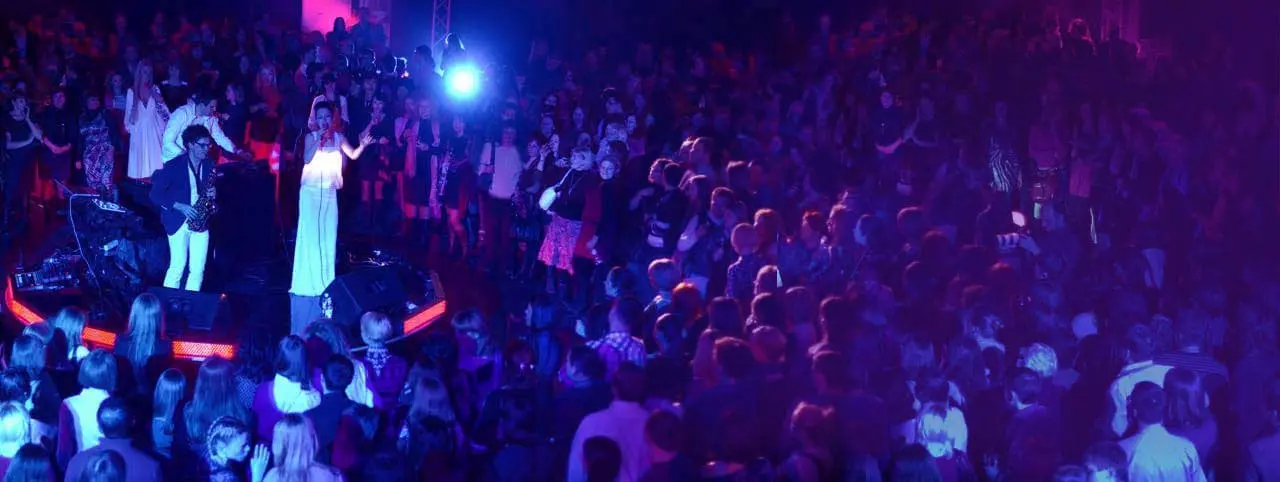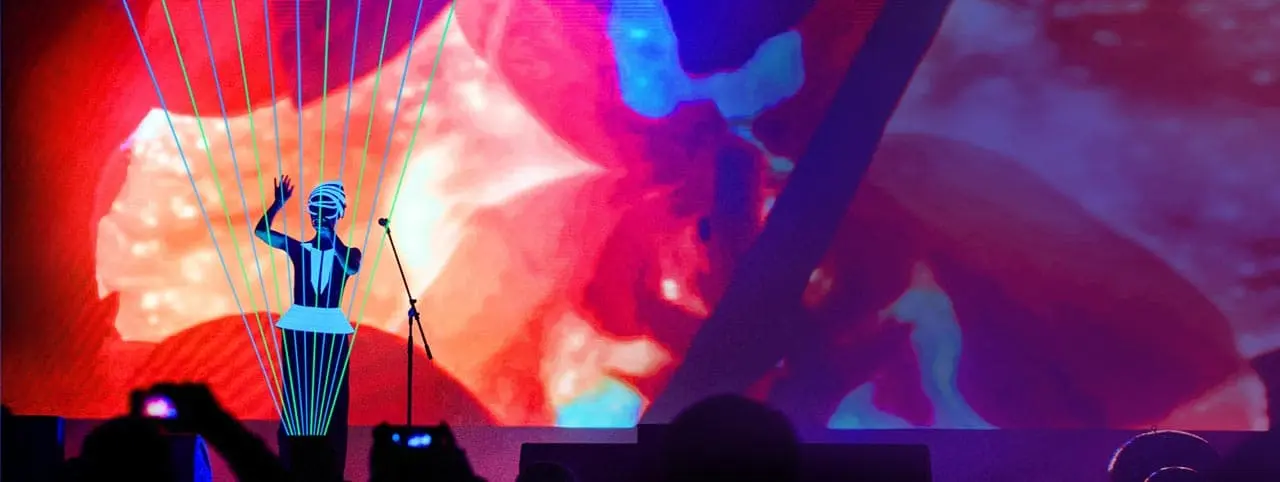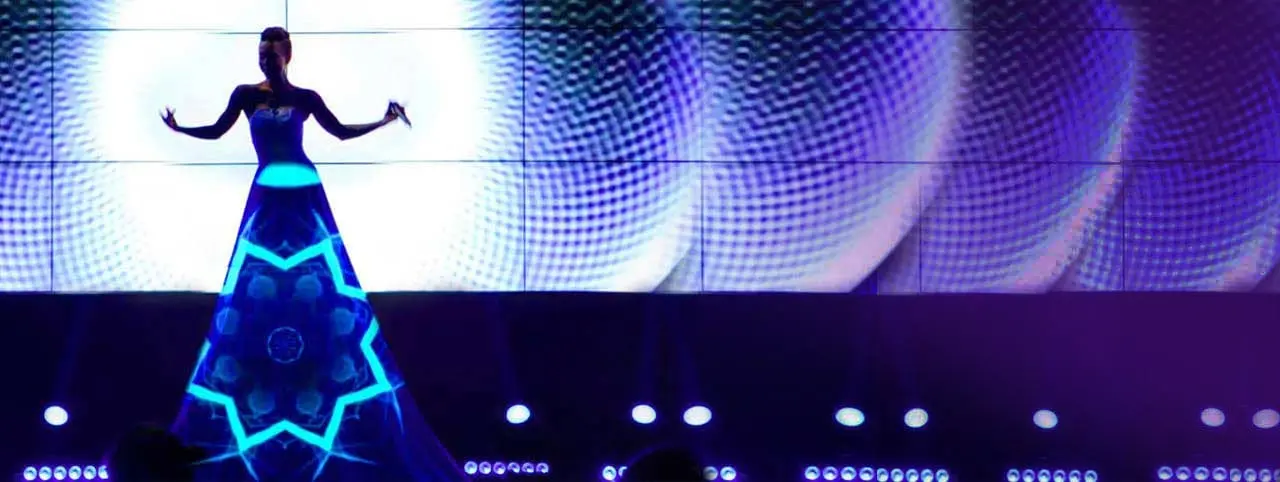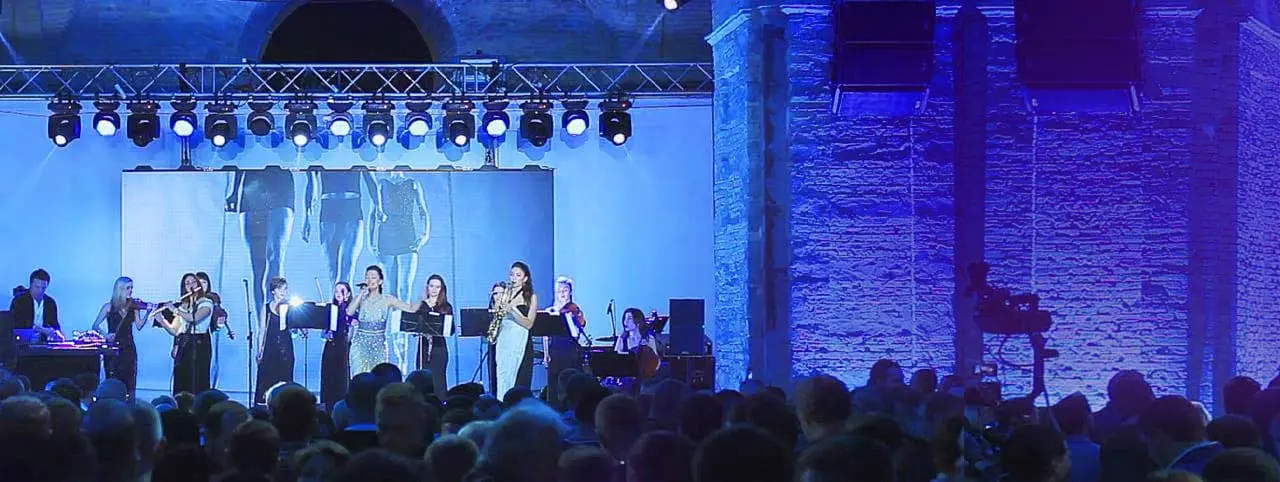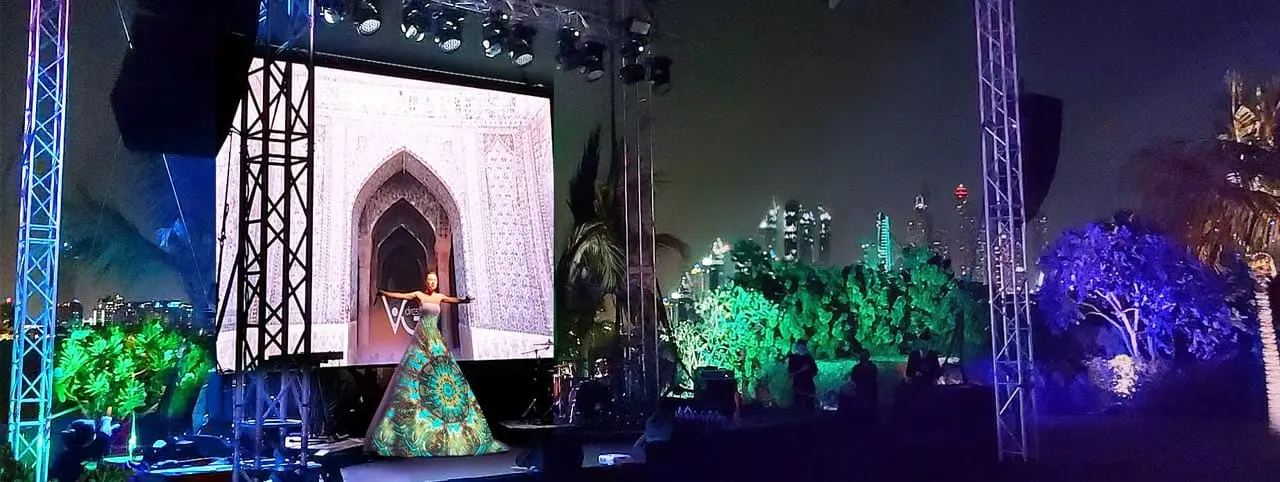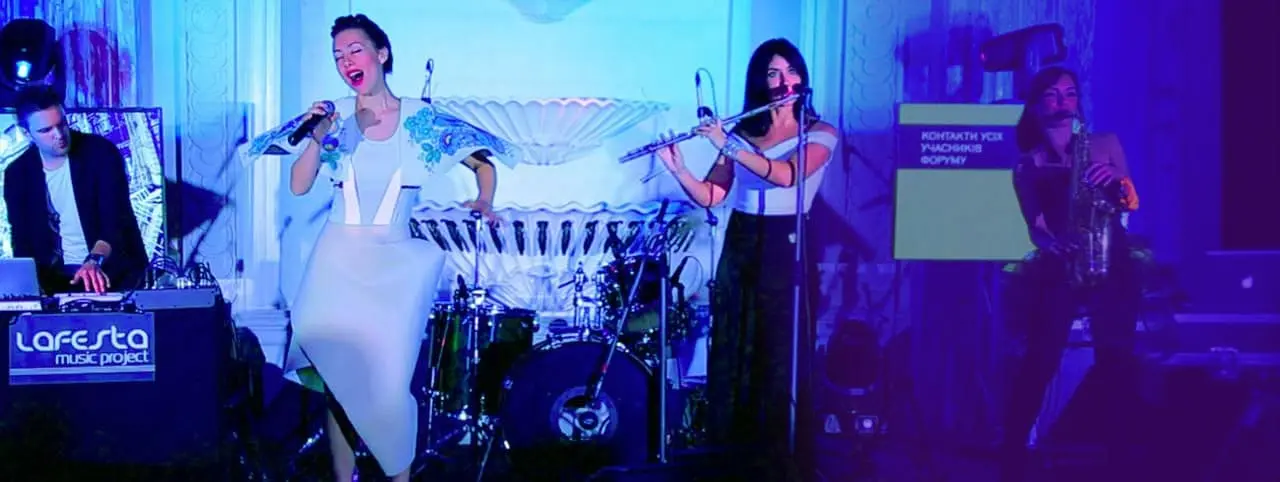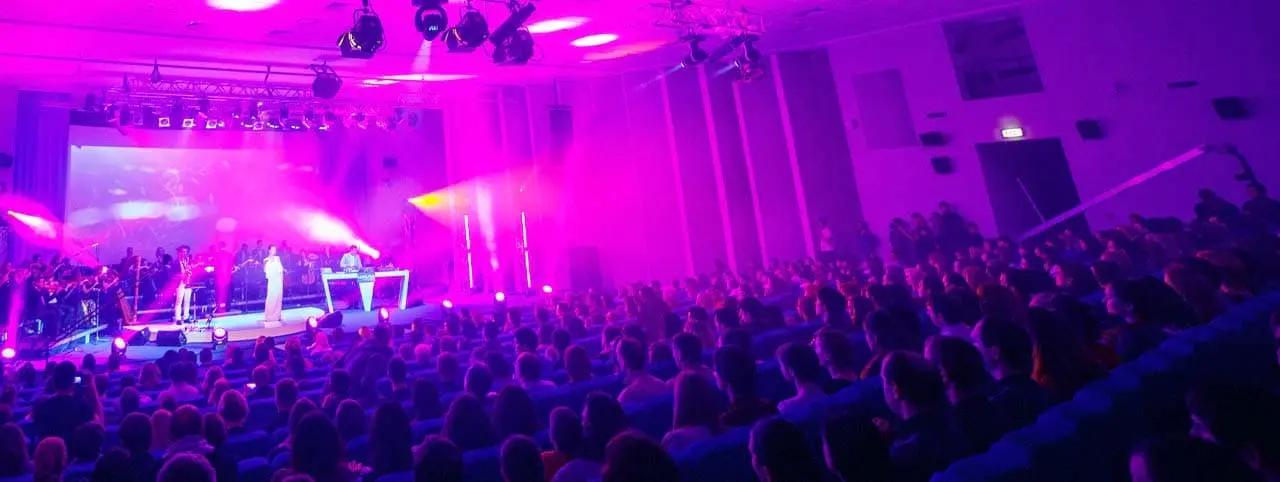Event, corporate party and wedding in the Metaverse

Imagine this: an international company with offices in several countries wants to bring all its employees together for an event in Dubai or Cyprus. This requires a serious budget, complex logistics and the ability for everyone to
put aside all business, leave their families and fly in for a few days. At the same time, there is the risk of cancellation due to a pandemic (lockdown) or other force majeure.
However, even with the most ideal planning and organisation, it is unlikely that 100% of those invited will be able to attend.
And then you find out that there is an almost infinite virtual space of digitised cities, streets or objects (full 3D copies of real hotels, museums, nightclubs and all other well-known locations).
With the help of rented virtual reality helmets (such as Oculus) and created avatars (an exact digital copy of each person), you can have the most exciting event of your life in just a few hours:
Parties on a virtual yacht overlooking Rio de Janeiro at night, or exploring the digitised halls of the British National Museum.
Virtual Reality at Microsoft Flight Simulator Metaverse today
"Microsoft Flight Simulator" already includes 2 trillion digitised trees, 1.5 billion buildings, roads, bridges, cities and an exact replica of the landscape around every airport in the world. It looks like the real world because everything has been scanned from reality at high quality.
Whether we like it or not, the modern world will move more and more into virtual space (3D world) every year, which is expressed in the fusion of digital and physical life.
Right now, event spaces and entire worlds are being actively created where people (with the help of their avatars) will be able to shop, party, study, work and live.
In the coming years, there should be a breakthrough in VR technologies that will make the metaverse as close to the real world as possible, which will increase the interest not only of gamers but of all businesses, event agencies and most people on the planet.

Metaverse - what is it?
The Metaverse is an almost infinite three-dimensional world that will unite all entertainment, work and personal virtual spaces. Entering the virtual world (or the world of augmented reality), a person will be able to fully work
(receive money, work experience and connections) (receiving money, work experience and connections for doing so), relax (walking through digitised museums and streets), shop in stores (with fittings, test drives), communicate and build relationships with other people.
In fact, the metaverse will become the second reality that unites billions of people. Instead of different browser tabs or social media pages, people will be able to interact in the virtual space of their work, university and private parties.
For example, your childhood friend lives in another country and you haven't seen him for a long time. You can now communicate by video, but this is just communicating with a two-dimensional image through the screen of a phone or computer. Now imagine meeting a friend in the virtual space of the metaverse, where you can not only communicate but also enjoy your favourite pastimes (playing golf, walking along a digitised familiar street in your city, etc.). This is a completely different level of online communication. When you can communicate and spend time together, not with remote avatars (as in computer games), but with an exact video copy of your friends, transmitting in real-time nuances of their facial expressions, then communication in the digital world will become more exciting. And it will completely change the way parties, events and conferences are organised.

The history of the emergence of the metaverse
The idea of creating a metaverse is relatively recent (only a few decades), because before the advent of the Internet, even science fiction writers found it difficult to imagine life in the 3D world. Most science fiction novels were about aliens, androids and galactic conquest.
In this novel, the "metaverse" was a global virtual reality stretching over 65,000 km, in which people worked and played. The main character of "Avalanche" is a hacker who lives in two different worlds. In real life, he worked as a courier for a pizza parlour, but he constantly escaped from his grey routine into the colourful world of the virtual metaverse. The theme of the influence of the virtual world on real life was then taken up by cinematography (especially in cult films: The Matrix, Ready Player One, Oasis).
Even in the first period of the development of the user Internet, it was understood that it was too "flat" and that the future belonged to 3D sites where people could fully immerse themselves. To implement this idea, a special VRML standard was created in 1994. It enabled the creation of interactive 3D graphics, avatars and animations. In 1997, Sony released a SAPARi online chat where users could roam and chat as animal avatars. At the same time, the first virtual city with streets, clubs and libraries appeared - Cybertown (developed by the Blaxxun Interactive studio). Users could earn cyber money to pay for their virtual housing and entertainment.

The computer games 'World of Warcraft', 'Second Life', 'Fortnite', 'Minecraft' and 'Roblox' became large-scale prototypes of the metaverse. Online game developers made huge profits from people's desire not only to play according to a pre-defined scenario but also to influence the shared virtual space themselves and to take part in virtual events, parties and concerts. For example, Blizzard Entertainment (the creator of "Warcraft") has about 5 million users with a paid subscription and a turnover of more than 8 billion dollars.
Each computer game embodies the idea of the metaverse in its own way. For example, "Second Life" (released in 2003) emphasises the imitation of relationships between people, as in real life. Each player can reinvent themselves (age, appearance, profession, and even create a script for their own virtual life). Roblox" was further developed and became a platform for creating your own games and worlds.
However, at the moment all computer games still remain separate spaces closed in their virtual world. Developers who create a full-fledged metaverse should unite everything (online communication, augmented reality, virtual worlds, work and entertainment) in a single space.

Metaverse today
In the past, virtual events have been regularly organised by various platforms. In 2019, for example, Disney premiered a new episode of Star Wars in Fortnite.
Director JJ Abrams gave an interview with his avatar in the same virtual space. This communication allowed him to visit and interact with other people's avatars.
"Fortnite" is famous for regularly organising virtual concerts, parties and branded clothing launches in its space.
For a long time, the evolution of virtual space into the metaverse was only discussed in the company of programmers, gamers and developers of online games. But in 2021, Mark Zuckerberg announced that Facebook would change its name to Meta in order to implement the idea of a virtual universe in the next 5 years. To confirm what has been said, in 2022 Facebook will invest $10 billion in this project (which is more than 30% of the company's annual income) and announce the hiring of 10,000 new employees whose activities will be related to the creation of the metaverse.
But Zuckerberg is not alone in his desire. In the same 2021, "Epic Games" announced their own vision and development of virtual universes (the creators of one of the best online games - "Fortnite").
They have raised $1 billion in funding for their version of the metaverse.
But it seems that another giant, Microsoft, will be Facebook's main competitor. They have already unveiled their own platform for working in virtual reality.
It will allow the use of 3D mesh avatars to hold joint conferences, interviews and meetings, and will be integrated into Microsoft Teams in 2022.

COVID and several waves of shutdowns have only accelerated these processes. Hundreds of millions of people have moved part of their real lives online (working from home, Zoom conferences, online studies). In the Minecraft game, entire virtual schools were organised to help children learn during the pandemic. The same processes also affected events. Companies began to organise company parties, presentations and conferences in virtual space.
Many companies have started to buy up space in the metaverse to set up their offices, shops and advertising space. The governments of various countries don't stay away. For example, in early 2022, Barbados (a small island nation) plans to become the first country in the world to open an embassy in the metaverse. China is creating its own Baidu metaverse with the help of state-owned companies (China Mobile, China Telecom and China Unicom). It even has its own planet, "Xi Rang" (Land of Hope), and has connected 100,000 Chinese users at once to test the virtual space.
At first glance, it all seems silly, or like a children's computer game, but we will explain in detail how the emergence of the metaverse will affect practical life, including events, concerts and parties.

Virtual or augmented reality?
The main question is how best to immerse people in virtual space: through a virtual reality helmet or augmented reality glasses (and lenses in the future). The first option seemed the most logical. In the aforementioned science fiction novel "Snow Crash", the protagonist entered the metaverse using a virtual reality helmet. In the early 1990s, Nintendo and SEGA developed the first gaming helmets for 3D games. Mark Zuckerberg also saw the development of the metaverse in this way - in 2014 he bought the company "Oculus" (a developer and manufacturer of virtual reality helmets) for $2 billion.
But the main disadvantage of such a device is that while immersed in the virtual world, a person becomes almost detached from reality. This is very uncomfortable when you are outdoors or in a room with other people. An alternative is augmented reality, which allows you to see the real world and the virtual world at the same time.
This technology was introduced to the public on a large scale by the game "Pokémon Go" created by Niantic. All you needed was a mobile phone with the application installed and the real world was in touch with the virtual heroes everywhere.
In the near future, school lessons will not be the same as they are now. With the help of augmented reality glasses, students will be able to see a historical figure or a dinosaur enter the classroom. According to pre-designed curriculum scenarios, a history teacher will be able to have a dialogue with a virtual 3D king, gladiator or knight, and the biology teacher will be able to turn the classroom into Jurassic Park.

Adam Savage (the host of the TV show "MythBusters") came into contact with this amazing virtual world. Он в 2018 году делал обзор очков дополненной реальности Magic Leap. In 2018, he reviewed the Magic Leap augmented reality glasses. The gadget scanned the room and showed that outside the windows (just down the street) there was a large whale swimming, making all the characteristic sounds of nature. Adam said it was so real it took his breath away.
And this opens up great opportunities for the events sector. Imagine a corporate event in the metaverse, where augmented reality immerses all guests in the theme of the event.
No more flat Zoom parties. In virtual reality, you can create all the effects, architecture and atmosphere you need for your event.
of your event.
Disney has already been granted a patent to create a theme park where all interactive activities and attractions are personalised for each guest through augmented reality.
People's movements around the park will be monitored via their mobile phones and personalised 3D effects will be projected based on their age and preferences.
In fact, there is a third way of developing virtual reality - holograms. However, the technology is still far from being able to provide an acceptable quality of interactive 3D reality indoors. Therefore, we do not consider this option for the development of the meta-universe in this article.

© Ihor Kuksenko www.lafestamusic.info
